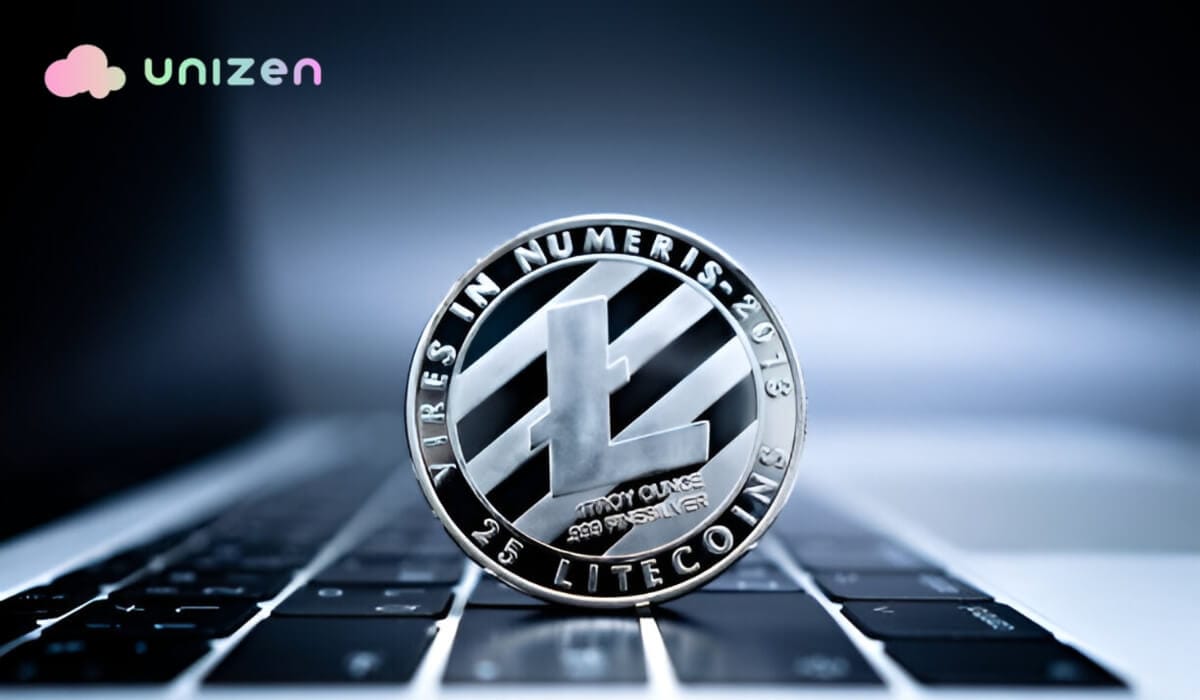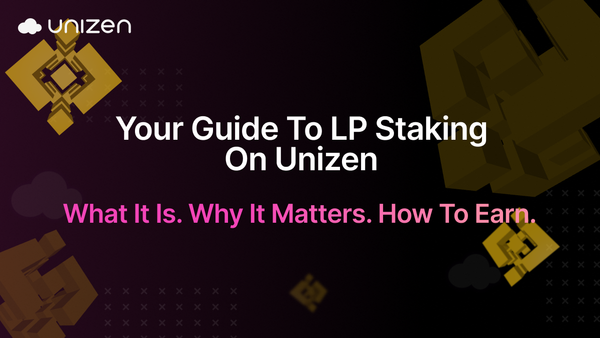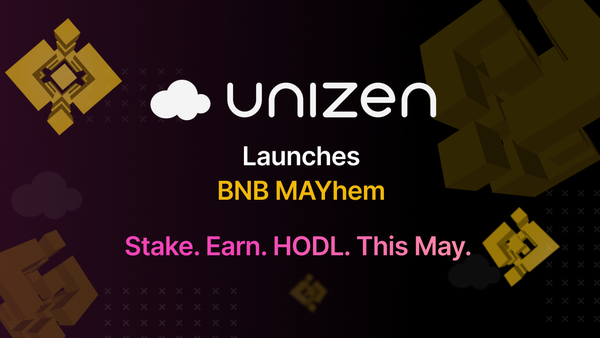Detailed Guide on How to Mine Litecoin
Discover the optimal hardware and operating system for mining Litecoin and effective mining techniques to achieve optimal results.

The world’s largest and one of the most common trends in the blockchain industry is mining cryptocurrencies such as Litecoin since it works faster and at a lower cost. This guide will help you learn how to mine Litecoin and teach you how to prepare your setup and maximize profit for your Litecoin mining business. The various types of mining hardware that you use are the most influential factors in the success of your Litecoin mining business. Litecoin is based on the Scrypt algorithm for mining currency. Devices such as Application-specific integrated circuits (ASICs) must be designed to cater to particular cryptographic operations in mining LiteCoins. While GPUs or CPUs are built for the purpose of computing, ASICs will solve the problem of intensity in the Scrypt algorithm.
Importance of ASIC Miners for Efficient Mining
Litecoin mining capability is strongly anchored in the functionality of the hardware used. Whereas GPUs and CPUs are used in mining cryptocurrencies, Application-Specific Integrated Circuits (ASICs) changed this. ASIC miners are intended for the performance of definite algorithms and are the most appropriate for Litecoin and Scrypt algorithms. If you're learning how to mine Litecoin, understanding the role of ASIC miners is essential.
ASIC miners are built purposely to mine Litecoin and solve the complex mathematical puzzles involved in mining. While GPS or CPUs are not specially designed for algorithm mining, ASICs can solely maximize the hashing computational power of the Scrypt algorithm. Here are why ASIC miners are essential:
- Exceptional Performance: ASIC miners offer a far greater hash rate than GPU or CPU mining. For instance, the Antminer L3+ is an ASIC device designed for mining Litecoin, with a hash rate of 504MH/s, much higher than that of normal hardware.
- Energy Efficiency: ASIC miners are designed to push as many hashes as possible while consuming the least energy. This efficiency reduces electricity expenses, which can make or mar mining.
- Reliability and Durability: Designed to run for long periods without a cooling system, ASIC miners are way more robust, especially in a mining situation, than GPUs or CPUs. They are not easily worn out or heat up, especially if they have been well cared for.
Comparison of ASIC, GPU, and CPU Mining Capabilities
The table below provides a detailed comparison of the three primary types of hardware used in cryptocurrency mining: ASIC, GPU, and CPU. Both kinds of hardware have their characteristics: They mainly include speed, power consumption, cost, and compatibility to carry out mining in Litecoin.
This comparison is intended to outline guidelines for which mining equipment to acquire depending on the amount of money one would be willing to spend, the technical specifications required, and the probable returns to be expected.
Comparing the platforms from the above tables, it is clear that the ASIC miners are the best because they provide higher hash rates, which are more efficient and profitable for mining Litecoin. GPUs can be a feasible option for normal users or limited operations, but CPUs could be more efficient due to their low speed and reliability. From the various aces distinguished in the table above, miners can make enhanced decisions regarding how to mine Litecoin.
Popular ASIC models for Litecoin mining
If you’re ready to invest in mining equipment, here are some top-performing ASIC miners to consider:
- Antminer L3+: This version is known to be light, faster and it can provide up to hash of 504MH per second.
- Innosilicon A6 LTCMaster: This device performs properly, as its hash rate is 1.23 GH/s, which is good for work with large-scale mining.
- Goldshell Mini-DOGE: An easily operable miner that is small enough but has a good cost/performance ratio.

Setting Up a Litecoin Wallet
When you start mining, you must have a secure place to store your Litecoins or other digital money. Choosing the best wallet makes it reductionist to protect your earnings from theft or loss.
The Role of Wallet Security
Cryptocurrencies such as Litecoin are digital products and are easily vulnerable to hackers if they find a way into an investor’s account. Litecoin Wallets provide convenience through accessibility for Litecoin transactions.
Types of Litecoin Wallets
- Hardware Wallets: These physical products hold your Litecoins offline, thus providing greater security against hacking. Some well-known hardware wallets are the Ledger Nano S and Trezor Model T. They are best used for Litecoin storage for long-term and major values or investments.
- Software Wallets: These wallets can be installed on desktop computers or hand-held devices and offer security and convenience. Examples: Exodus, Electrum-LTC. It is easy to use interfaces and the ability to get your hands on your money.
- Online Wallets: By opening a web browser, these wallets are best suited for a user who desires mobility. Example: LiteVault. This type of wallet is likely to be affected by hacking compared to hardware wallets.
Choosing and Installing Mining Software
Mining software is somewhere between your mining hardware and the Litecoin blockchain. If you're exploring how to mine Litecoin, software selection is critical for running any mining business.
Overview of popular mining software
Selecting the right mining software can be a major plus in mining Litecoin. The software you choose helps it operate as a bridge between your mining hardware and the Litecoin network so that you can efficiently carry out financial transactions and mining for rewards. Below, you can find three of the most commonly used Litecoin mining software, which has features suitable for all levels of users and miners.
- CGMiner: A versatile vehicle well suited to nearly any mining configuration.
- EasyMiner: Since it has an easily understandable GUI initially offered to users, it is suitable for beginners.
- MultiMiner: it is well known for its flexibility in domain use and for being easily and smoothly utilized across platforms.
Step-by-step Guide to Installing and Configuring Mining Software
Mining software is the tool that enables a mining rig to communicate with the Litecoin Blockchain. Before that, let’s stress a more noticeable aspect: improper installation and configuration negatively impact the profit margin. Here’s a detailed guide to setting up and configuring your mining software:
Download the Mining Software
Go to the website housing the mining software you plan to use to be safe from virus-infected software. Go to the homepage of the software of your choice. For example, download CGMiner directly from its official GitHub repository.
As with the file downloading step, make sure the downloaded file accommodates your operating system type, 32-bit or 64-bit. Instead, to utilize the script, copy it and other related files into a separate folder on your device.
Configure the Settings
Once installed, you must set the required software to connect to the Litecoin network. This requires sensitive information, such as your mining pool information and wallet address.
- Mining Pool URL: Select a good mining pool for the mining service, such as LitecoinPool.org or Antpool, and copy the pool’s URL.
- Wallet Address: Input the selected Litecoins wallet to which your mined Litecoins will be credited. In order not to lose profit, ensure that the records are accurate.
- Mining Algorithm: For Litecoin, choose the Scrypt algorithm because Litecoin uses it as the main type of its network.
Optimize for Performance
Optimization means that all the structures needed for successful mining are fully configured so as not to burden the hardware or use more power than necessary.
- Adjust Parameters: If you own extensive hardware, tailor settings to intensity (how hard your miner works) and fan speed for your hardware. For older ASIC miners, this will keep them balanced and prevent them from overheating. A higher intensity setting will produce the highest hash rates in a newer model, such as the Antminer L7.
- Temperature Management: The set-up must ensure the mining device runs within the manufacturer-suggested temperature variation (60 degrees Celsius to 75 degrees Celsius for ASICs). For additional cooling solutions, buy extra coolers if necessary.
- Firmware Updates: The most up-to-date software mining will also help obtain additional hash power and updated ASIC firmware.
Start mining and monitor how the miner performs
When your systems are configured, start the software to start mining Litecoins. As mining progresses, continuously monitor key metrics to ensure smooth operation:
- Hash Rate: This shows how fast your hardware is at cracking down on cryptographic issues. A steadily rising or even constant hash rate is positive.
- Temperature: You should always monitor the temperature of your hardware using software such as HWMonitor. Overheating can cause severe damage to the components, making it very dangerous.
- Accepted Shares: The mining pool’s dashboard shows the number of accepted shares. For example, mining needs to be efficient, which can be estimated based on a high acceptance rate.
By following these steps, your mining setup will be configured properly, and you will be ready to mine Litecoins effectively and profitably.

Joining a Mining Pool vs. Solo Mining
The future of mining depends on a Litecoin miner’s choice to join the mining pool or mine alone. Each approach has its strengths and weaknesses. Understanding these options is crucial for those learning how to mine Litecoin. Joining a mining pool focuses on solving blocks quicker than individual miners. At the same time, the rewards are shared proportionally to the computing power contributed by the team.
The reward obtained is partitioned among the participants intelligently depending on their hash power contribution to the pool. Solo mining, on the other hand, means mining individually without going for a pool or group of miners. The disadvantage of this method is that the chances of mining a block are lower than the one above, but with this method, all the rewards go to miners.
Benefits and Drawbacks of Joining a Mining Pool
The first key choice that Litecoin miners have to make is whether to mine individually or join a mining pool. Miners can also join other miners’ computation power to increase their probability of making constant rewards in mining pools. But this also has its advantages and disadvantages.
Advantages of Joining a Mining Pool
- Consistent Rewards: Mining pools have more consistent earnings since payments are made according to each user’s hash rate contribution to that pool. This reduces the volatility of the earnings normally associated with solo mining, which makes Litecoins more liable to formation.
- Lower Barrier to Entry: The mining pool enables miners with less or without huge rigs’ investment to mine Litecoins. This makes mining possible for those with little capital rallying behind them.
- Community Support: Most mining pools encourage miners to learn or share details, share resources, and discuss challenges relating to hash power sharing. This feeling of belonging can be most helpful to new entrants because they understand what it takes in Litecoin mining.
Although mining pools have their advantages, they also have their disadvantages. Of course, there are also negative aspects when mining with a pool, such as decreased earnings because of the fees and threats to the decentralization of the Litecoin network when joining a pool.
Disadvantages of Joining a Mining Pool
- Fees: Most mining pools take a cut of your profits. There are also certain factors that determine the mining pool fees. In the past, fixed costs were quite common, but today, most pools take a portion of your earnings, which can be a fraction that differs from pool to pool.
- Centralization Risks: Organizations’ Mining pools have various disadvantages in that they increase centralization within the Litecoin network. This happens when several enormous pools hold a large share of the network’s hash power, compromising the decentralized nature of coins.
Thus, understanding these advantages and disadvantages will help miners make correct decisions using goals and resources. As previously seen, mining pools give continuity and backing; on the other hand, solo mining is more independent and may have higher individual payouts.
How To Select a Suitable Mining Pool
Selecting the right mining pool is one of the most important factors to consider in order to mine efficiently and earn good profits. Here are key factors to consider when choosing a pool:
- Evaluate Your Hardware’s Capabilities: While the hardware has a low hash rate, mining pools will be good for making steady revenues. Greater pools may guarantee stability, and fixed payouts are more frequent.
- Consider Your Risk Tolerance and Goals: While the low-tier pools may offer higher payments per block, the rewards will not be as stable. Decide whether you would enjoy many small rewards more than you would appreciate the chance to receive large rewards, though less often.
- Research Pool Fees and Transparency: Refill options with clearly stated payment policies should be cheap and affordable, ranging from 1% to 3%. Pools described in detail and filled with statistics and performance data are also more trustworthy.
- Community and Support: Any community with an active forum or support channel may be useful for helping with technical problems and obtaining information useful for increasing mining profit.
Thus, considering all these factors, you can select the right mining pool for your hardware and monetary goals.
Starting the Mining Process
After establishing your hardware, pocket, and programs, it is time to get on with it: the mining process has started. Bootstrapping your mining business entails starting up the software and checking to see everything is working properly.
Launching the Mining Software
- Initialize the Software: To confirm your configuration, use the mining program you downloaded.
- Connect to the Litecoin Network: Ensure that whichever mining software you use is connected to the Litecoin Blockchain through your mining pool or solo mining method.
- Start Mining: To start, locate the starting or run symbol marked in your Windows software interface and click it.
Optimizing and Monitoring Mining Operations
Accurate mining depends on several parameters, which must be routinely checked continuously. The key performance indicators to track include:
- Hash Rate: measures to determine how fast each piece of hardware you use for mining can solve cryptographic quandaries. A hash rate above the mark means you have a higher chance of earning Litecoin.
- Accepted Shares: This report shows how many work units your hardware contributes to the work unit pool, which is valid.
- Temperature: These temperatures help prevent damage to the hardware while keeping it optimal. Most ASIC miners can work in ideal conditions within a temperature range of 60°C to 75°C.
You should periodically review the above relevant metrics to optimize your equipment and increase profitability.
If you want to continue mining Litecoin, your system must be as fine-tuned as possible. Optimization can lower expenses, improve productivity, and even enhance profit.
Tips for Maximizing Efficiency and Profitability
Optimizing the mining of Litecoin demands enhancing the rig, operations, and continual upkeep to get the highest revenue for the cost possible. For those exploring how to mine Litecoin, adopting the following tips would help miners cut expenses, increase productivity, and advance their revenues.
- Upgrade Your Equipment: To this end, purchase newer-generation ASIC miners, which are energy efficient and have higher hashing capability.
- Optimize Power Usage: Reduce electricity costs by operating the equipment in power-saving modes or mining during low voltage.
- Regular Maintenance: Dust accumulation should be prevented on hardware components, and you should ensure that they get enough airflow.
- Overclocking: Overclocking means the ability to raise the usage speed of a specific computer part, including an ASIC miner, above the standard speed provided by the manufacturers. This is made through manipulating variables such as clock frequency and voltage (overvolting). Many miners take their ASICs and 'overclock' or 'overvolt' them, with great payoffs. However, the above should be done carefully to prevent overheating.
Regular Maintenance and Troubleshooting of Common Issues
Proper maintenance and fast response to a problem are critical to maintaining the efficiency and profitability of your mining business. Here are common challenges and how to address them:
- Low Hash Rate: They commonly result from outdated firmware or configuration software. Please always update your mining software and firmware for better mining results.
- Overheating: Lack of proper cooling can predispose the hardware to component failure and also result in decreased performance levels. Focusing on enhancing the airflow supply to the mining rig, removing dust from the components used in it and can also purchase more fans or cooling systems if needed.
- Connection Issues: Like any automated process, Litecoin mining can be disrupted by issues such as an Internet connection or incorrect pool setting. Check your internet connection and bandwidth and ensure you use the correct clienteling credentials for your mining pool.
Challenges and Considerations
While mining Litecoin can be profitable, it comes with challenges that require strategic planning to overcome:
Energy consumption and cost implications
Mining of cryptocurrencies may be undeniable, and this consumes a lot of power; therefore, there is a chance of high electricity costs. To mitigate this:
- Switch to Renewable Energy: Power: Solar, wind, or hydroelectric power can dramatically reduce one’s energy bill.
- Optimize Mining Schedules: Use appliances and machinery, especially in the evening and when rates are low.
- Control Consumption: Make sure that the equipment used is low-energy and save power settings on the computer.
Market volatility and its impact on mining profitability
The price rate of Litecoin can be volatile, which means that the profit to be made through mining the currency can also fluctuate and be subject to change at short intervals. To manage this risk:
- Ensure that an organization is abreast with market changes and ways to make adjustments.
- Invest some excess profits during weak price movements to get most of your earnings during strong price movements.
If these challenges are addressed effectively, miners can prevent any undesirable situation from happening in the long run and, hence, maintain a stable and highly profitable mining industry.
Conclusion
Learning how to mine Litecoin effectively requires careful planning and adaptation to challenges. Unlike Bitcoin, the Scrypt algorithm requires moderate electricity usage and poses a problem of profitability and environmental conservation due to the needed computational power.
Based on the effectiveness of renewable energy, miners can consider using renewable energy sources, choosing cost-effective ASIC miners, and following the newest market trends. With the right strategy, mining Litecoin can be profitable and aligned with environmentally conscious practices, contributing to a more sustainable blockchain network.
Ultimately, understanding how to mine Litecoin goes beyond just earning rewards. It’s about being part of a distributed network that fosters growth in the finance and technology industry. Achieving efficiency, profitability, and sustainability can increase the efficiency and effectiveness of the work while contributing to the development of the Litecoin network.



